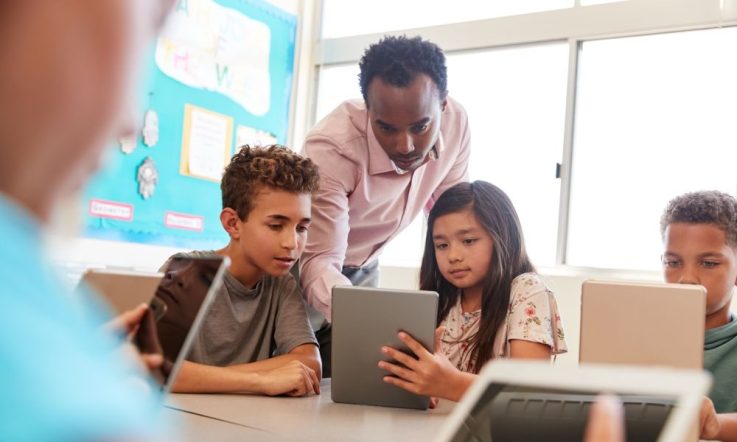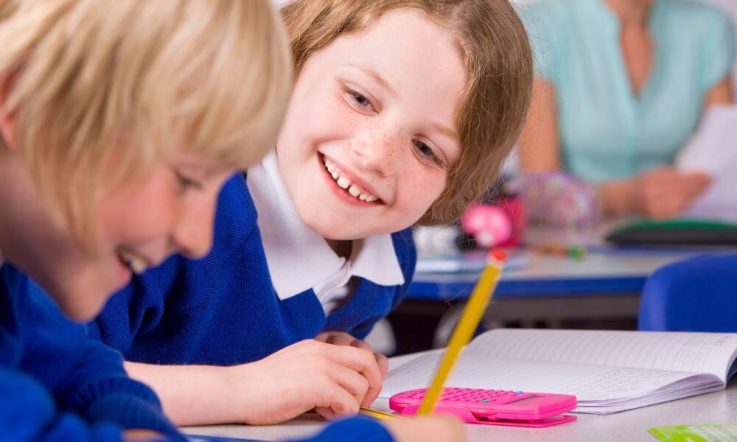‘You may not have heard of TIMSS, PIRLS, ICCS, ICILS or LaNA – and even if one of these international assessments has been administered in your country recently, chances are your own classroom wasn’t involved. So, how can these studies be relevant to you as an educator?’ In today’s article Dr Dirk Hastedt, Executive Director of the International Association for the Evaluation of Educational Achievement (IEA), explores the value and impact of international large-scale assessments – from providing system-level data to countries and researchers, to insights that educators can use to make evidence-informed decisions about their own classroom practice. He also shares how the IEA is working to bridge the research-practice gap through resources designed specifically for teachers.
There is an art to flying, or rather a knack. The knack lies in learning how to throw yourself at the ground and miss – Douglas Adams, Life, the Universe and Everything (1982).
Human progress has always been about learning. The ‘art to flying’ that humans have been perfecting for hundreds of years is just one example from our world today of our ongoing stories of experimentation. Rather than a guessing game, it is a process of following evidence. The first humans attempt and the humans after, learn – and so goes scientific progress. Where once we fall on the ground, we adjust and get a little bit further. Slowly but surely, we begin to get the knack, and now we can fly.
Standing on invisible shoulders
Whether it’s flying, farming or frisbeeing, so many of the standards of our modern lives – from mundane to monumental – owe their smooth operation to hidden histories of trying, testing, analysing and retrying. Experimenting and improving by building upon evidence has inspired the world all around us. We’re always standing on the invisible shoulders of those who came before.
In 1958, a small group of researchers from different educational disciplines met in Hamburg, Germany at the UNESCO Institute. They shared the germinating seed of an idea that countries should begin to learn from each other and so benefit from educational experiences and knowledge beyond their own borders. Before, research efforts had considered differences and variation between schools and teaching at a national level, but the outcomes of these were naturally limited by being inward facing.
The researchers in Hamburg aimed to learn from the differences between countries, so they wouldn’t need to experiment blindly with educational policies. These scholars were the eventual founders of what became the International Association for the Evaluation of Educational Achievement (IEA), and they viewed the vast and varied global approach to teaching and learning as a natural educational laboratory. The first IEA study was conducted across 12 countries, 2 years later.
If custom and law define what is educationally allowable within a nation, the educational systems beyond one's national boundaries suggest what is educationally possible – Professor Arthur W Foshay, founding member of IEA
We may not always be aware of it, but the inspiration of pioneers who drew up early concepts for flying machines is present each time we board a flight. Similarly, the influence of comparative, large-scale assessment on education systems and education trends has tended to stay in the background; impactful but silent.
Whether you are a student, teacher, parent, principal or otherwise, in many countries around the world it is highly likely that you have felt the impact of IEA research. It forms a big part of how education policy and practice have gradually evolved around the world through the years. How so? Let’s try and pull back the curtain a little bit.
Education systems, not individuals
You may not have heard of any of IEA’s assessments. Even if you are a teacher in a relevant grade, and one of TIMSS (Trends in International Mathematics and Science Study), PIRLS (Progress in International Reading Literacy Study), ICCS (International Civic and Citizenship Education Study), ICILS (International Computer and Information Literacy Study), or LaNA (Literacy and Numeracy Assessment) has been administered in your country recently, there’s a chance none of your classes have ever been assessed.
So, how can these international assessments be relevant to you?
It is because of IEA’s method of data collection in participating countries. Studies are carefully designed so that the results obtained from a sample population are sufficient to be representative of a whole target population. In other words, the assessments are administered to enough random classes in a target grade level that we can say with high levels of confidence that the results reflect all classes in that grade level across the country.
So, though your own class might not have be tested, enough classes will have been tested that the results represent all students – including your own. Also, IEA studies are curriculum-based; assessments are based on participating countries’ curricula, making the results very relevant right across their education systems.
What this also signifies is that IEA assessments are not concerned with the results of individual students, or even individual schools. Our international large-scale assessments (ILSAs) are intended to provide education-system level data to countries and researchers.
It isn’t standardised testing to rank students by achievement, but is rather working on a much more macro level of investigation. The data could pose questions like: in any one country, are there certain home context factors that seem to connect particularly strongly with students who achieve in the top 20th and bottom 20th percent of scores – or are there countries where students’ background matter less and can we learn from this? Or, how is teacher job satisfaction trending nationally and does that seem to correlate with levels of student discipline? (Eryilmaz et al., 2025).
Looking to get to the bottom of questions like these is what helps education systems progress in the most evidence-informed way possible, building on the progress of yesterday.
Many moving parts!
Not a huge revelation: education systems are vast organisms with many moving parts. So, using findings from ILSAs in efforts to improve education outcomes is far, far from a straightforward task. If your country is seeing falling achievement in the ICILS assessment on digital literacy, for example, is the policy response to give more opportunities for teacher training, to provide more technology in classrooms (Mejía-Rodríguez et al., 2022), to adjust or refresh the curriculum, or something entirely different?
Not only is there no silver bullet, but if there was one it would probably be a different size and shape for each participating country!
IEA are experts on implementing ILSAs, but the participating countries are the experts on their own education systems and national contexts. Generally, IEA avoids making strong recommendations for what countries should do in terms of policy and instead makes the data freely available for institutions and researchers to dig into for inspiration. There is a massive amount of information available for each country in each study cycle, and countries that participate in our studies often make great use of this resource.
Teachers are key to improving outcomes
IEA has been dedicated to improving education outcomes around the world for over 60 years now. Implicit in IEA’s mission is the understanding that without teachers, nothing in education is possible. Although teaching practices have changed and will continue to adapt, there is no question that teachers will continue to be the most important factor in students’ learning – even in times of increased AI usage. It’s vital that considering the big picture doesn’t diminish from the value that individuals bring to improving the education of our next generation; every one of us has a piece of ownership of a great responsibility.
IEA resources to support educators in the classroom
In recent years, IEA has been taking strides to support teachers and make the gap between research and practice as small as possible.
Two publication series that IEA produces – IEA Teacher Snippets and IEA Research for Educators – have so been designed with educators in mind. These publications provide evidence-based instructional materials for classroom use and are intended to empower educators to integrate research-driven methods into their teaching.
Teacher Snippets are short-form, peer-reviewed publications that highlight international and country-specific findings from studies conducted by IEA and IEA National Study Centers to provide teachers with insights and practices for the classroom.
IEA Research for Educators is an open-access series that provides evidence-based instructional materials for classroom use, bridging the gap between education research and practice. As of now, 2 volumes have been released: the first on didactic teaching approaches from across the globe to improve reading skills, and the second focusing on practical, evidence-based strategies for teaching reading comprehension with digital texts.
Providing these educator resources is a small way in which IEA can give back to the teaching community that makes our studies possible by their, and their students’, participation.
Hopefully, a growing mutual understanding can build awareness of the value of strong data from education studies, make more visible the work in the background that helps evolve global education structures, and increase the benefits that educators in classrooms can take from the research that they make possible.
References and related reading
Adams, D. (1982). Life, the Universe and Everything. Pan Books.
Eryilmaz, N., Kennedy, A., Strietholt, R., Johansson, S., Bäckström, P., & Henry, M. (2025, July). Teacher job satisfaction: International evidence on the associations with teacher workload, school leadership, and student discipline (IEA Compass: Briefs in Education No.27). IEA. https://www.iea.nl/publications/series-journals/iea-compass-briefs-education-series/teacher-job-satisfaction
International Association for the Evaluation of Educational Achievement. (n.d.). IEA Research for Educators. IEA. https://www.iea.nl/publications/iea-teachers-snippets/iea-research-educators-more-book-series
International Association for the Evaluation of Educational Achievement. (n.d.). IEA Teacher Snippets. Teacher Snippets: Inspiration for the Classroom. IEA. https://www.iea.nl/publications/iea-teacher-snippets
Mejía-Rodríguez, A., Strello, A., Strietholt, R., & Christiansen, A. (2022, September). A Booster for Digital Instruction: The Role of Investment in ICT Resources and Teachers’ Professional Development (IEA Compass: Briefs in Education No. 18). IEA. https://www.iea.nl/publications/series-journals/iea-compass-briefs-education-series/september-2022-role-investment-ict



